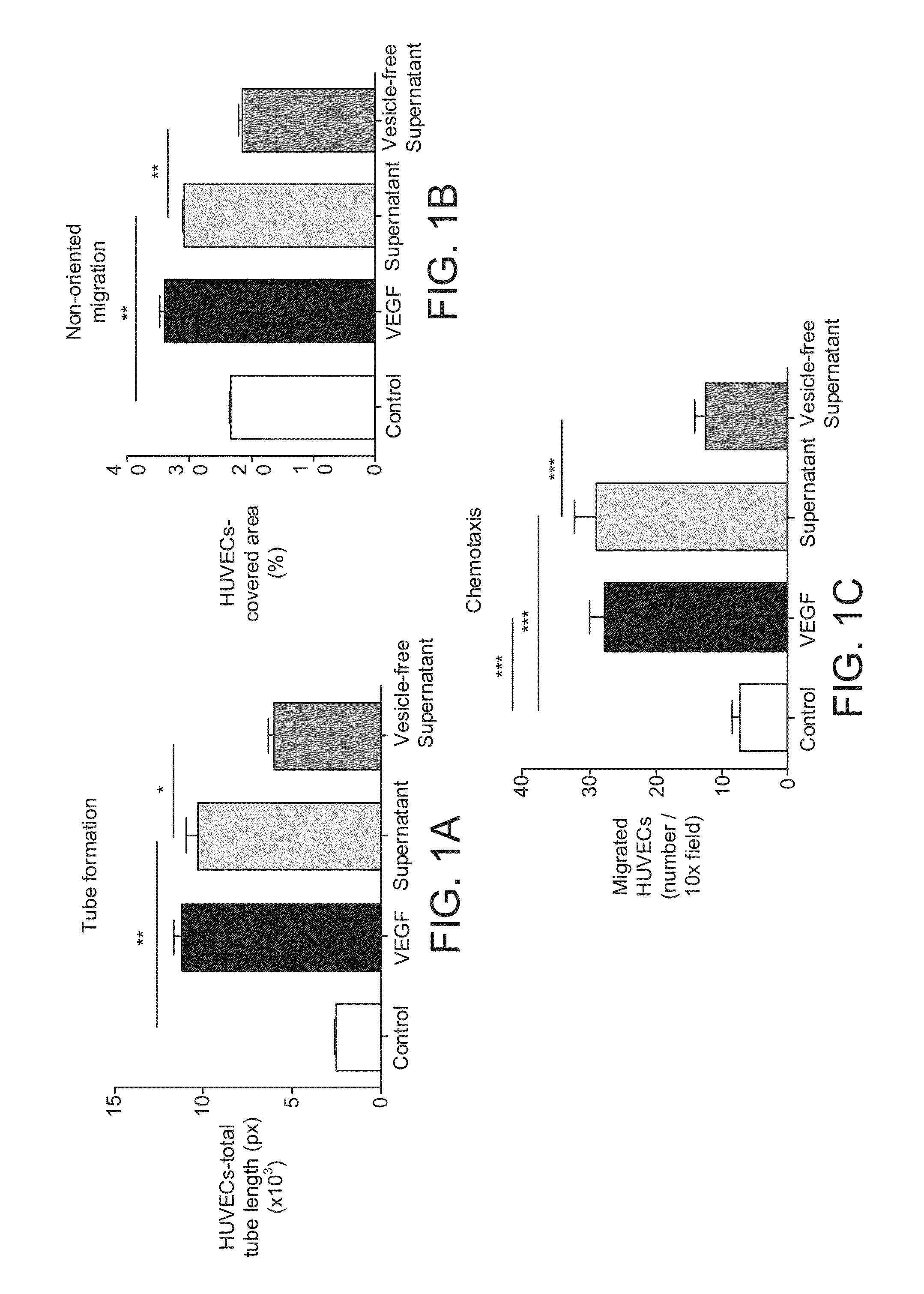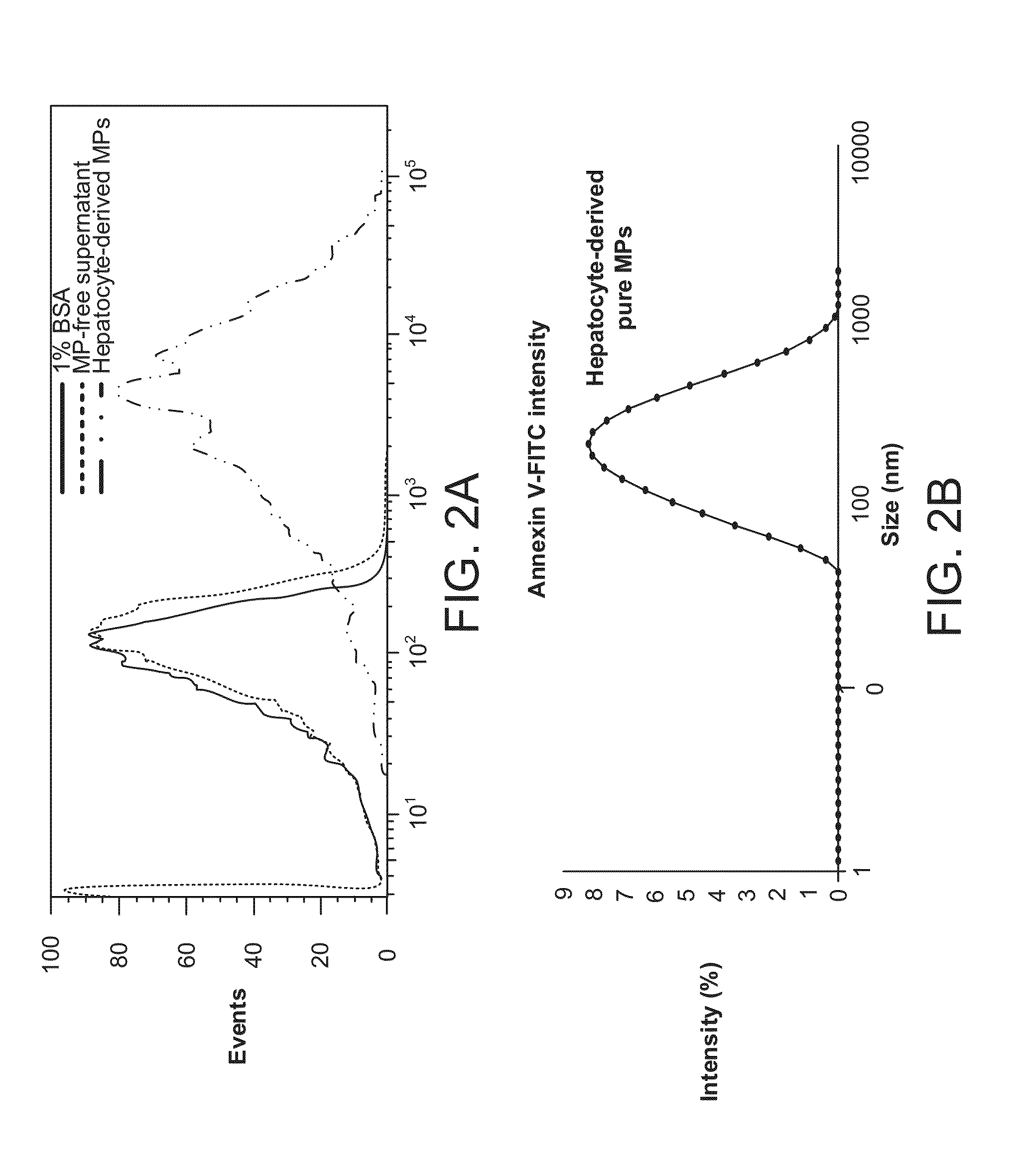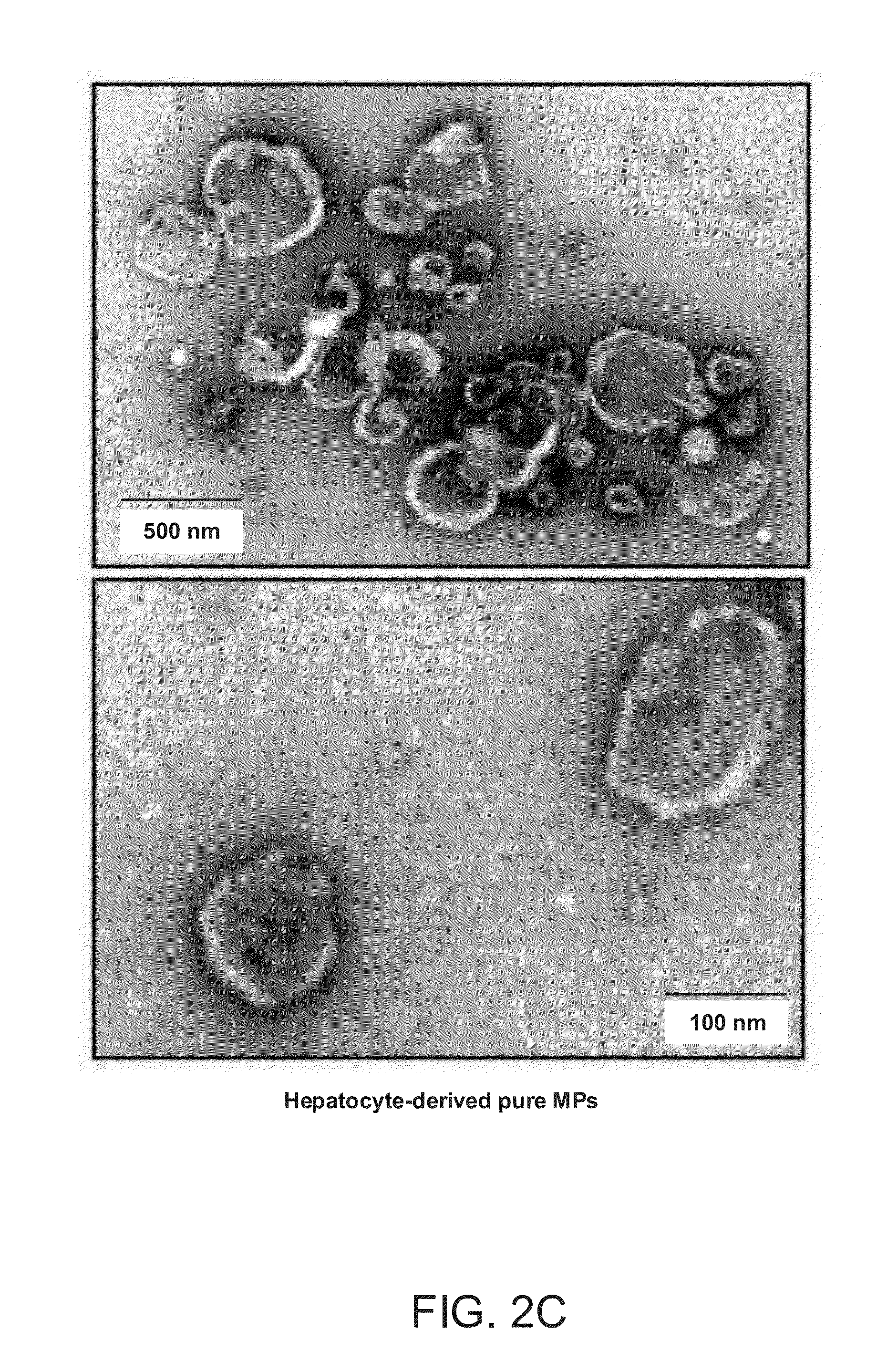Detecting and Treating Liver Damage
a liver disease and liver disease technology, applied in the field of liver disease detection and treatment, can solve the problems of incomplete understanding of the link between lipotoxicity and angiogenesis, poorly understood mechanisms triggering angiogenesis in nash, and a number of other chronic liver conditions, so as to reduce the progress of nafld, reduce the internalization of circulating evs, the effect of blocking the internalization
- Summary
- Abstract
- Description
- Claims
- Application Information
AI Technical Summary
Benefits of technology
Problems solved by technology
Method used
Image
Examples
example 1
Hepatocytes Release Microparticles During Lipotoxicity that have Potent Pro-Angiogenic Effects In Vitro and In Vivo Through Vanin-1-Dependent Internalization
[0118]The studies in this example provide evidence that fat-overloaded hepatocytes after exposure to the saturated but not unsaturated free fatty acids secrete pro-angiogenic signals. Through several lines of evidence hepatocyte-derived microparticles (MPs) were identified as the putative pro-angiogenic factor both in vitro and in vivo in a process involving caspase 3 activation in hepatocytes and Vanin-1 (VNN1)-dependent internalization of MPs into the endothelial cells. These findings uncover a novel mechanism linking hepatocyte lipotoxicity to angiogenesis and identify putative new therapeutic targets to inhibit angiogenesis and disease progression. More specifically, these findings demonstrated that hepatocyte-derived microparticles (MPs) are critical pro-angiogenic signals that regulate endothelial cell angiogenesis during ...
example 2
Characterization of Circulating Extracellular Vesicles in Nash Development
[0230]Metabolic non-alcohol related Fatty Liver Disease (NAFLD) has become the most common form of chronic liver disease in both children and adults affecting up to 30% of the American Population [1, 2]. Mexican-Americans are at particular risk for this disease, which is now the fastest growing indicator for liver transplantation eligibility [3, 4]. NAFLD is tightly associated with obesity and encompasses a wide spectrum of conditions associated with over accumulation of fat in the liver, ranging from hepatic steatosis to steatohepatitis (NASH) and cirrhosis [5]. Hepatic steatosis is characterized by isolated accumulation of lipids in the liver and is generally thought to follow a relatively benign non-progressive clinical course [6, 7].
[0231]NASH is a serious condition, with about 5 to 25% of patients progressing to fibrosis and cirrhosis with its associated complications of portal hypertension, liver failure...
example 3
Vanin-1 Levels in NASH Patients Who Received One Year Treatment with PTX Vs. PLC
[0303]Patients cohort: 55 subjects with NASH (diagnosed by liver biopsy) which received 1-year treatment with PTX or PLC.
[0304]Inclusion criteria: 1) daily alcohol intake of <30 g for males and <15 for females; 2) appropriate exclusion for other liver diseases; 3) age between 18 and 70 years; 4) ability to provide informed consent.
[0305]Methods: EVs were purified from plasma and levels of Vanin-1 was performed by immunoassay (Mybio source, San Diego, Calif.) by using 100 uL from each sample in duplicate.
[0306]FIG. 30 illustrates a change from baseline after 1 year of therapy with Pentoxifylline (PTX) vs. placebo (PLC) in levels of Vanin-1 (pg / mL). In the box-and-whisker plot the lower boundary indicates the 25th percentile, the line within the box indicates the median value and the upper boundary of the box indicates the 75th percentile. The whiskers extend to the most extreme data points.
PUM
| Property | Measurement | Unit |
|---|---|---|
| confocal time- | aaaaa | aaaaa |
| temperature | aaaaa | aaaaa |
| diameter | aaaaa | aaaaa |
Abstract
Description
Claims
Application Information
 Login to View More
Login to View More - R&D
- Intellectual Property
- Life Sciences
- Materials
- Tech Scout
- Unparalleled Data Quality
- Higher Quality Content
- 60% Fewer Hallucinations
Browse by: Latest US Patents, China's latest patents, Technical Efficacy Thesaurus, Application Domain, Technology Topic, Popular Technical Reports.
© 2025 PatSnap. All rights reserved.Legal|Privacy policy|Modern Slavery Act Transparency Statement|Sitemap|About US| Contact US: help@patsnap.com



